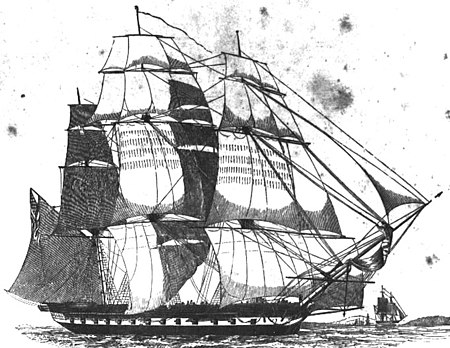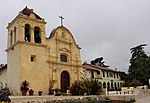Capture of Monterey
1842 in Alta CaliforniaConflicts in 1842History of Monterey County, CaliforniaIndependent MexicoMilitary history of California ... and 5 more
Monterey, CaliforniaNaval battles involving the United StatesOctober 1842 eventsPunitive expeditions of the United StatesThe Californias

The Capture of Monterey by the United States Navy and Marine Corps occurred in 1842. After hearing false news that war had broken out between the United States and Mexico, the commander of the Pacific Squadron Thomas ap Catesby Jones sailed from Lima, Peru with three warships to Monterey, California. The Americans' objective was to take control of the capital city before a suspected British cession could be achieved.
Excerpt from the Wikipedia article Capture of Monterey (License: CC BY-SA 3.0, Authors, Images).Capture of Monterey
Camino el Estero, Monterey
Geographical coordinates (GPS) Address Nearby Places Show on map
Geographical coordinates (GPS)
| Latitude | Longitude |
|---|---|
| N 36.596388888889 ° | E -121.88861111111 ° |
Address
Camino el Estero
93940 Monterey
California, United States
Open on Google Maps








